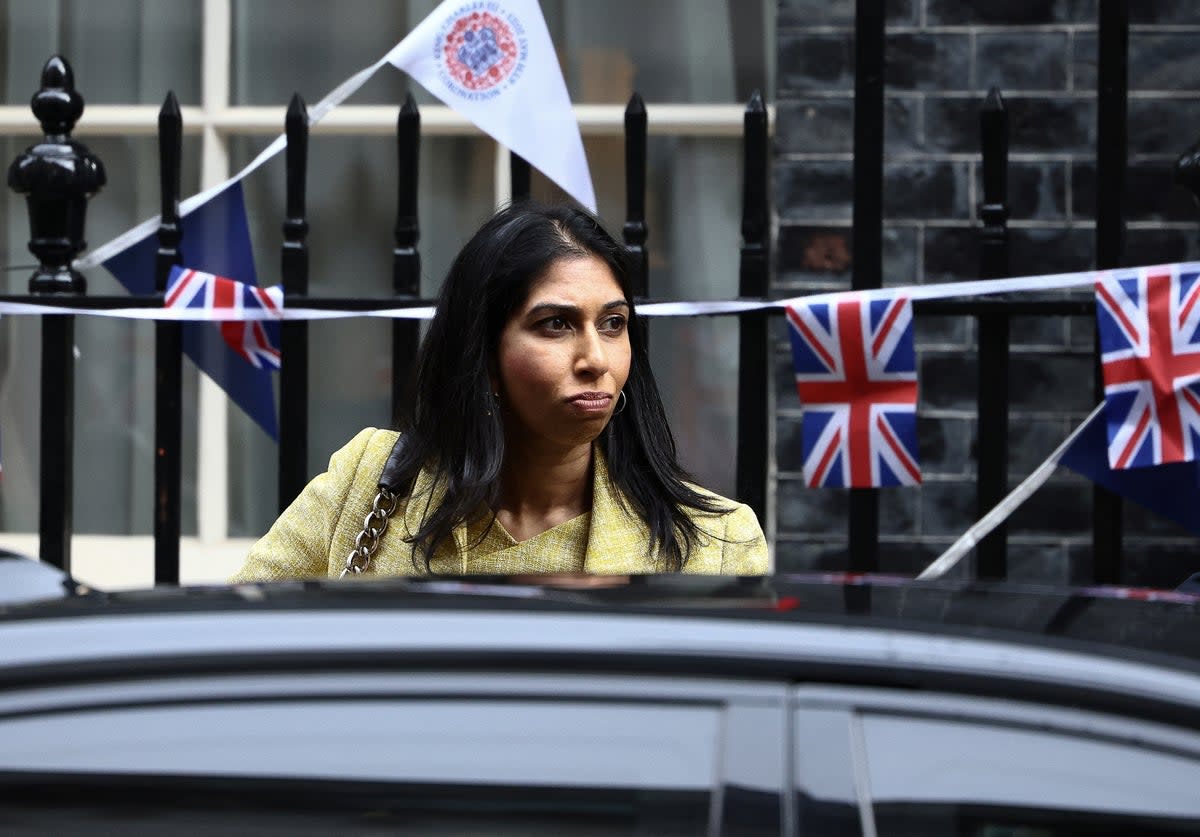Voices: How Brexit failed to take control – it made immigration rise

- Oops!Something went wrong.Please try again later.
In December 2019, the Conservative Party under Boris Johnson won the general election by claiming they would “Get Brexit Done”. A month later, the same claim was laid out about “taking back control of our borders”. I suspect most people believed they would. How wrong we were.
Now, we see confirmation that net migration figures have reached a record high, reaching 500,000 in the year to June 2022. In the year to December 2022, the numbers are expected to be between 700,000 and 1m. As Andrew Neil tweeted today: “Leavers and Remainers could not have been more wrong about the impact of Brexit on migration.”
So, what has gone wrong?
Between 1997 and 2010, the New Labour years, net migration averaged 200,000 per year. In 2007, the Tories attacked Labour for these figures, with the-then prime minister David Cameron pledging that his party would cut them in half.
But 13 years later, and after three general elections, net migration is more than twice that. The latest official statistics show net migration has surpassed half a million and could double later this year. This is ten times what was promised – with the biggest increases happening after Brexit.
The problem isn’t a lack of plans – only any plans that work. Nothing is working like it was supposed to. The Tories brought in “Go Home” vans to send migrants away, but they only led to 60 returns. The hostile environment policy introduced checks on anyone opening bank accounts, but these have so far failed to reveal any new names for removal, either.
Much fanfare was made of launching a new Australian-styled points-based system for controlling numbers. (Never mind we’ve had the general system in place since 2008, as the Migration Advisory Committee had to once remind the prime minister.)
Instead of bringing numbers down when EU free movement was ended, overall figures continued to soar. There is still no cap on non-UK visas. There were no small boat crossings recorded before 2018, but these too have shot up to the tens of thousands since the claim of “taking back control”.
Before Brexit, the UK was in a EU returns policy where anyone could be returned to the first safe EU country they came to. Irregular migration was relatively low. But since Brexit, the UK is no longer part of a returns policy meaning it is far more difficult to make returns – and irregular migration is at record highs. Nor can we return migrants to the first safe country in the EU entered precisely because of the Brexit deal the government rushed through.
Last year, the home secretary, Suella Braverman, said the government would be able to put a “tangible” plan in place for cutting migration, fixing a broken asylum system and stopping small boats if parliament passed new laws. And they did: the Nationality and Borders Act. (Though notably, there were more small boat crossings than ever before in the months following these new laws designed to end them.)
By year’s end, Braverman accepted the system remained broken and said more laws were required to fix it. Meanwhile, public confidence in the Tory’s handling of immigration reached record lows.
And now we have the latest figures. In a speech today, before she was interrupted by protesters, Braverman argued that she voted Brexit to take control of our borders and said we need to get overall immigration numbers down, “urgently”.
She could act swiftly to cut numbers substantially, if she wanted to. She could impose a cap on the number of work visas. She could prevent overseas unskilled visas, or slash overseas students, or make it even more difficult for British citizens to relocate to the UK with non-British family. She could push for a new returns policy with the EU and significantly deter arrivals and ease removals.
None of these measures require a new Bill. But it would take political will – and this perhaps shows why these decisions have not been made. Taking actions like these would have serious consequences, such as a very damaging impact on a flagging economy where growth is desperately needed.
The irony is that Brexit was never needed to make immigration cuts like these. The economic consequences of not delivering on this pledge have been seen as too high a price to pay.
This could change with extra investment in education and skills, rolling out new technologies and a longer term plan to raise wages and productivity. But with no such plan in place, the government is forced to repeat old promises, and the numbers keep rising.
As referenced, Leavers and Remainers could not have been more wrong about the impact of Brexit on immigration. It has led to record high numbers, and has left the government’s claims in tatters and its reputation tarnished.
The ability to make the big changes was always at hand. What has been lacking is the strategy and investment to make it work.
Rhetoric may win the electoral battle, but competence and planning wins the larger election war. If the Tories want to win back support and belief in their manifesto, they’ll need to deliver what they promised.
Thom Brooks is Professor of Law and Government at Durham University and author of Becoming British

